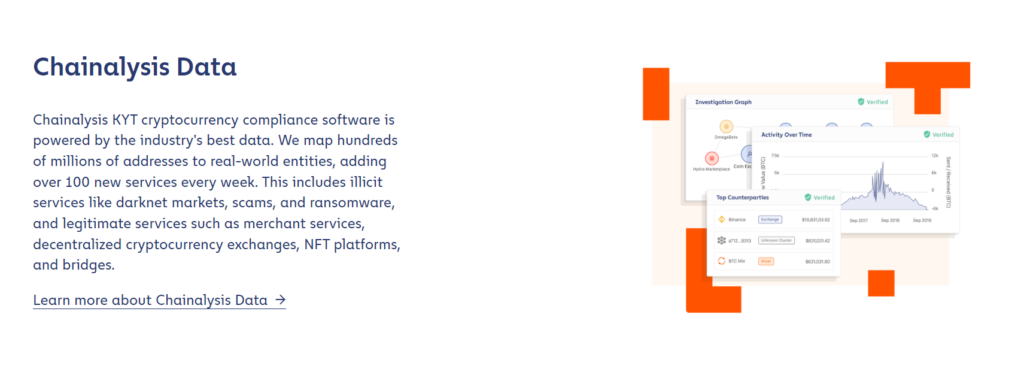Understanding cryptocurrency AML red flags is not just beneficial; it’s essential for safeguarding your investments. This article embarks on a journey to unravel these red flags, equipping you with the knowledge to navigate the crypto realm securely.
Table of Contents
Decoding AML in the Crypto Universe
Understanding AML’s Role in Crypto
The fusion of Anti-Money Laundering (AML) practices with the dynamic world of cryptocurrencies marks a significant stride in the financial sector. AML within the realm of digital currencies is not just an extension of traditional finance; it’s a specialized field that addresses the unique challenges of this emerging digital landscape.
AML’s definition in the context of cryptocurrency is nuanced, reflecting the complexities of decentralized digital transactions. The evolution of AML regulations alongside the rise of cryptocurrencies tells a tale of regulatory bodies adapting to the innovative nature of digital currencies. This evolution is crucial in understanding how AML measures are tailored to address the specific risks associated with cryptocurrency transactions.
Equally important is the role of various regulatory bodies in shaping the AML landscape in the crypto world. These organizations, functioning at both global and national levels, are instrumental in setting the standards for AML compliance in digital currency transactions. Their guidelines and directives are pivotal in defining and enforcing AML practices within the cryptocurrency sector.
Understanding these foundational elements of AML in cryptocurrency is vital. It sets the stage for a deeper appreciation of the specific AML red flags and compliance strategies that are crucial for anyone navigating the cryptocurrency market.
The Criticality of Spotting AML Red Flags in Crypto

Why Ignoring Red Flags Can Be Costly
Identifying AML red flags in cryptocurrency transactions is a vital safeguard against financial malpractice. These warning signs are not mere formalities but are essential in maintaining the integrity and security of digital financial systems.
The High Stakes of Overlooking Red Flags
The consequences of ignoring AML red flags in cryptocurrency can be severe. For individuals and organizations alike, failing to recognize these signs can lead to legal repercussions, including penalties and fines. Beyond legal implications, there’s a risk of reputational damage, which can erode trust and credibility in the eyes of customers and partners.
The Ripple Effect on the Crypto Market
The impact of ignoring AML red flags extends beyond individual cases. It can undermine the overall stability and integrity of the cryptocurrency market. This can lead to a loss of confidence among investors and users, and potentially result in more stringent regulatory measures, altering the landscape of the crypto economy.
Recognizing and acting on AML red flags is not just a regulatory necessity; it’s a critical component in ensuring the health and sustainability of the cryptocurrency market. It’s about creating a secure and trustworthy environment for all participants in the digital currency space.
Identifying Common Cryptocurrency AML Red Flags
Here’s a comprehensive list of AML red flags in crypto transactions, each accompanied by potential implications for clarity.
| Red Flag | Description | Potential Implications |
|---|---|---|
| Unusual Transaction Patterns | Transactions that significantly deviate from a user’s typical activity, such as sudden large deposits or withdrawals. | Could indicate attempts to evade detection or the movement of illicit funds. |
| Transactions with High-Risk Countries | Frequent transactions with countries known for lax AML regulations or high levels of corruption. | May suggest an attempt to launder money through jurisdictions with weaker AML controls. |
| Use of Anonymity-Enhanced Cryptocurrencies (AECs) | Transactions involving cryptocurrencies designed to provide greater anonymity than traditional cryptocurrencies. | Could be used to obscure the source or destination of illicit funds. |
| Rapid Movement of Funds | Quickly moving funds between different cryptocurrencies or wallets, often in a short time frame. | This could be an attempt to break the audit trail and hide the origin of funds. |
| Mismatched Information | Inconsistencies in user-provided information, such as discrepancies between the user’s profile and transaction patterns. | May indicate identity theft, account takeover, or efforts to disguise illicit activities. |
| Transactions with Unregulated or Unlicensed Platforms | Engaging in transactions with platforms that lack proper regulatory oversight or licensing. | Increases the risk of involvement in illegal activities due to lack of compliance with AML standards. |
| Suspicious Use of Mixing Services | Utilizing services that blend cryptocurrencies from various sources to obscure the trail of funds. | Often associated with attempts to launder money or finance illegal activities. |
| Repeated Small Deposits or Withdrawals | Frequent small transactions that fall below reporting thresholds, known as ‘smurfing’. | A common tactic to avoid detection while moving large amounts of money in aggregate. |
By being aware of these signs, individuals and institutions can take proactive steps to investigate and address suspicious activities, thereby contributing to a safer and more transparent cryptocurrency environment.
Tools for Detecting AML Red Flags in Crypto

Detecting AML red flags in the cryptocurrency sector is crucial for compliance and security. Various advanced tools are available to assist in this process. Below is a detailed chart outlining some key tools for detecting AML red flags in cryptocurrency, their primary functions, and their target users.
| Tool | Primary Function | Target Users |
|---|---|---|
| Chainalysis | Provides compliance and investigation software to detect fraudulent activities in crypto transactions. | Financial institutions, government agencies, cryptocurrency businesses. |
| Elliptic | Offers tools for monitoring and investigating crypto transactions to identify high-risk activities. | Crypto exchanges, banks, and regulatory bodies. |
| CipherTrace | Specializes in blockchain analytics and crypto AML solutions, tracing the source and destination of funds. | Law enforcement, regulators, and financial institutions. |
| Crystal Blockchain | Advanced analytics for monitoring cryptocurrency transactions and identifying potential AML risks. | Financial analysts, compliance officers, and crypto businesses. |
| Coinfirm | AML/KYC solutions for cryptocurrencies, helping businesses comply with regulatory requirements. | Crypto exchanges, wallet providers, and financial services. |
| Scorechain | Analytics and tracking tools for various cryptocurrencies to detect suspicious transactions. | Crypto businesses, financial institutions, and compliance teams. |
| TRM Labs | Blockchain intelligence platform designed to detect fraud, financial crime, and compliance breaches. | Government agencies, financial institutions, and crypto businesses. |
| ComplyAdvantage | Real-time crypto transaction monitoring focusing on AML and counter-terrorism financing. | Banks, fintech companies, and crypto exchanges. |
| Cyvers | Web3 security through real-time detection and prevention of crypto attacks. | Crypto exchanges, wallet providers |
🚨Code Red!🚨 (Ongoing)Our AI powered system has detected multiple suspicious transactions from @HECO_Chain bridge
— 🚨 Cyvers Alerts 🚨 (@CyversAlerts) November 22, 2023
Suspicious address has received around $85M. Suspicious address: https://t.co/JlMClIM7hg
First transaction is 10,145 $ETH from @HECO_Chain bridge to suspicious… pic.twitter.com/IwpqXvhCsU
These tools utilize technologies like blockchain analysis, AI, and machine learning to provide in-depth insights into cryptocurrency transactions. They are essential for individuals, businesses, and regulatory bodies in identifying and addressing AML red flags, thereby contributing to a more secure and transparent cryptocurrency market.
Navigating the Legal Labyrinth of Crypto AML
The legal landscape of Anti-Money Laundering (AML) in the cryptocurrency sector is complex and continuously evolving. Navigating this labyrinth involves understanding various global and national regulations that impact cryptocurrencies. Below is a detailed chart that outlines key legal frameworks and regulations in different regions, highlighting their main features and implications for the crypto industry.
| Region/Country | Regulation/Law | Main Features | Implications for Crypto |
|---|---|---|---|
| Global | FATF (Financial Action Task Force) Guidelines | Sets international standards for combating money laundering and terrorist financing. | Requires member countries to regulate and monitor cryptocurrency activities. |
| USA | Bank Secrecy Act (BSA) & FinCEN Guidelines | Mandates reporting and record-keeping by financial institutions. | Crypto exchanges must register with FinCEN and comply with BSA requirements. |
| European Union | 5th Anti-Money Laundering Directive (5AMLD) | Extends AML regulations to virtual asset service providers. | Crypto businesses must perform customer due diligence and report suspicious activities. |
| United Kingdom | Money Laundering Regulations 2017 | Includes crypto asset firms under AML regulations. | Requires crypto businesses to register with the Financial Conduct Authority (FCA). |
| Japan | Payment Services Act & Financial Instruments and Exchange Act | Regulates crypto exchanges and requires KYC procedures. | Crypto exchanges must be registered and comply with AML/CFT regulations. |
| Singapore | Payment Services Act | Classifies digital payment tokens under AML/CFT laws. | Crypto businesses must obtain a license and adhere to AML/CFT measures. |
| Australia | Anti-Money Laundering and Counter-Terrorism Financing Act 2006 | Includes cryptocurrency exchanges under AML/CTF regulations. | Exchanges must register with AUSTRAC and comply with AML/CTF rules. |
| Canada | Proceeds of Crime (Money Laundering) and Terrorist Financing Act | Covers crypto exchanges and wallet providers. | Requires compliance with AML regulations and reporting of suspicious transactions. |
This chart provides an overview of the diverse regulatory environments across different regions, reflecting the varied approaches to AML in the cryptocurrency sector. These regulations have significant implications for how crypto businesses operate, emphasizing the need for compliance and vigilance in the face of evolving legal requirements. Understanding these legal frameworks is essential for anyone involved in the cryptocurrency market, from investors to service providers.
Conclusion
The importance of recognizing and addressing Cryptocurrency AML Red Flags cannot be overstated. As this article has highlighted, staying vigilant against these warning signs is crucial for maintaining the integrity and security of the cryptocurrency market. From individuals to institutions, the responsibility lies in adapting to the changing regulatory environment and technological advancements to ensure a robust defense against potential financial crimes. The journey through the world of cryptocurrency AML is complex, but with informed awareness and proactive measures, it is possible to navigate this terrain successfully.
FAQs
What are Cryptocurrency AML Red Flags?
Cryptocurrency AML red flags are warning signs of potential money laundering activities in crypto transactions.
Why is AML Important in Cryptocurrency?
AML is crucial in cryptocurrency to prevent illegal activities and maintain the integrity of digital financial systems.
How Can One Detect AML Red Flags in Crypto?
Detecting AML red flags involves monitoring transaction patterns, understanding regulatory frameworks, and using advanced technological tools.


